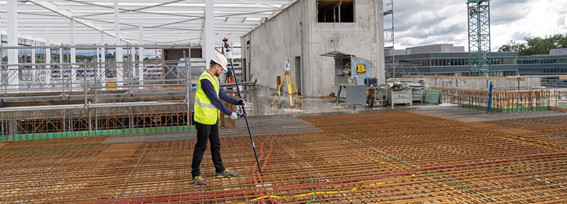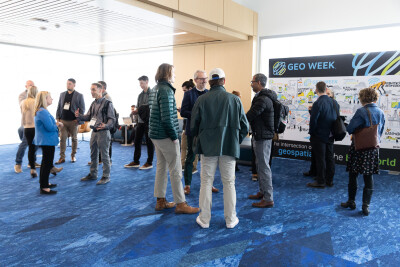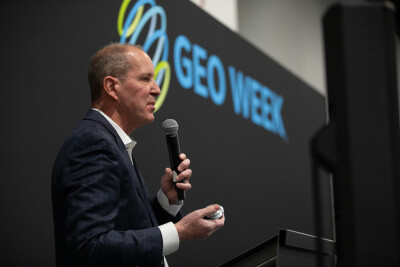The AP20 AutoPole combines an intelligent sensor module with the new AP Reflector Pole and operates with Leica Geosystems’ existing automated total stations to create a unique solution for autonomous workflows. It opens up new possibilities and is the world’s first device on the market that solves three common workflow challenges: holding the pole vertical and stable, entering the pole height manually into the field software and locking to a foreign target on a site with multiple reflectors.
PoleHeight function
By updating the pole height automatically in the field software, the system ensures that the height on record is always correct, which avoids errors, time-consuming postprocessing and returning to the field to remeasure. Zogg explains that there different setups available for this PoleHeight function, which are best illustrated from the perspective of a two-person surveying crew (a person at the total station and another at the pole) and a one-person (robotic) use case:
A two-person use case where one person operates the total station with integrated field software using the keyboard/display. The second person holds the prism pole (AP reflector pole) with the Leica AP20 AutoPole. The total station is then connected with the AP20 via Bluetooth. As soon as the person on the AP reflector pole adjusts the pole height, the passive height detection system in the AP reflector pole tracks the change and transmits the information from the Leica AP20 to the total station, where it is automatically updated in the field software.
Second, a one-person robotic use case, where the person on the AP reflector pole uses the Leica AP20 H (height only) and a field controller to connect and steer the total station. The field controller is directly connected via Bluetooth to the AP20 H. As soon as the height of the AP reflector pole is stable, it sends the new height to the field controller where it is automatically updated in the field software.

The Leica AP20 with tilt functionality always communicates via total station. It’s also important to highlight that the connection between the Leica AP20 and the field controller or total station is always established. The height is updated in the field software in real time as the pole height changes. Additionally, the pole height is automatically detected as soon as the upper tube of the pole gets snap-locked into predefined lock positions. Zogg explains that these lock positions are spaced at 5-centimetre intervals on the pole, the same intervals users have today on a reflector pole. The achieved accuracy in height is +/-1.0mm. The pole height can also be changed manually afterwards in the field software or in the office software.
Tilt compensation functionality
The tilt compensation of the AP20 AutoPole increases efficiency when working with total stations, as there is no longer a need to level the pole for measurements and stakeout. On the Leica AP20, an IMU (Inertial Measurement Unit) measures the pole acceleration and the angular rates. A crucial component of the tilt compensation is the data exchange between the total station and the Leica AP20’s IMU. The IMU uses positional information that it receives from the total station in real time. Special Bluetooth low-energy technology enables the data exchange between the total station and the IMU in the Leica AP20. The final pole tip position is calculated on the total station, also in real time.
The user can switch on the tilt compensation functionality and, after a short initialisation phase of a few seconds, the Leica AP20 sends the message that it is initialised and ready to measure. The field software notifies the user with a message (“tilt compensation initialised”) and an icon. The Leica AP20 data sheet lists the tilt accuracy:

The tilt range is +/- 180 degrees: as long as the total station can measure the prism, the Leica AP20 can measure in any position. As the pole gets closer to a horizontal position, the additional 2D uncertainty increases. The measurement range is up to 300m from the total station.
Zogg adds that not having to level the pole saves time: around 30-50% or even more when doing layout and measurements: “The layout process, especially today, is an iterative process: level the pole, measure, move, repeat. Thanks to the Leica AP20’s automatic tilt compensation, surveying and construction professionals can eliminate an entire process step. Today a pole with a “bad” level bubble can even ruin a full day of work. With the calibration-free tilt pole, you no longer need the level bubble for the measurements and layout”.
Increasing flexibility and safety on site
Tilt compensation decreases measurement time and increases flexibility and safety on site by enabling the measuring of points in locations that are inaccessible or put the user at risk. No longer having to level the pole extends the measurement and layout range of total stations and adds flexibility.
He adds: “For instance, measuring the corner of a house is not straightforward as you can’t place the reflector pole straight up on the corner points. Now with the Leica AP20, the pole can be tilted and the corner point gets easily measured. Furthermore, a tilted pole can measure hidden points that are not directly visible from the total station. This saves a lot of time as you do not need an additional setup of the total station”.
It can also happen that a surveyor needs to measure a point that is not accessible at all. By having the capability to tilt the pole, these points can now be measured. Furthermore, the fact that the user can fully focus on where he walks and does not need to look onto the level bubble anymore also increases their overall safety. For example, if you do a survey or layout along a busy road, the AP20 allows you to focus on your steps and pay attention to the traffic because you don’t need to keep an eye on the level bubble.
Another example of a hazardous situation is a construction site with a lot of rebar installed (displayed in the image below), which makes it difficult to walk. “Wrong steps can be dangerous, and any distraction such as having to look onto the level bubble can be a safety risk”, he concludes.








